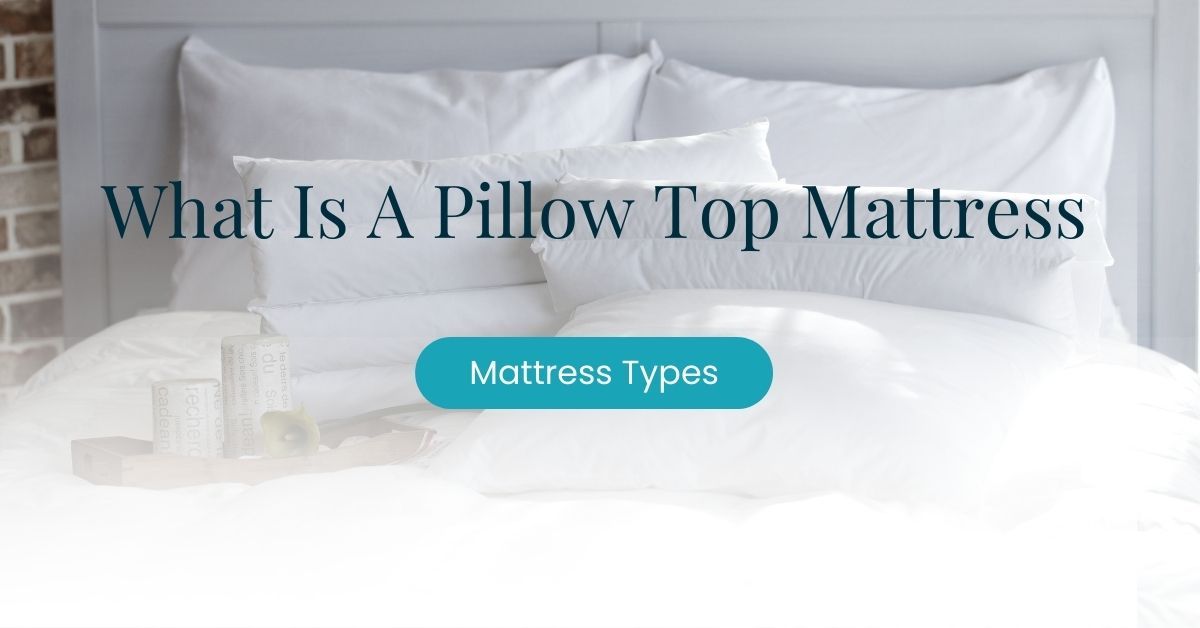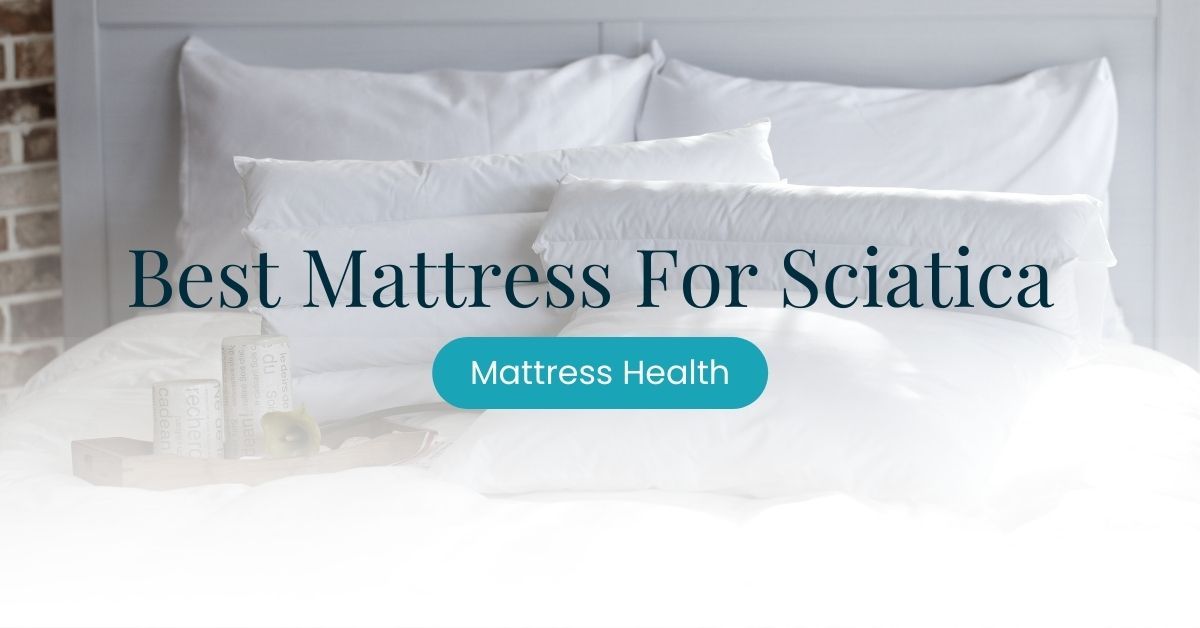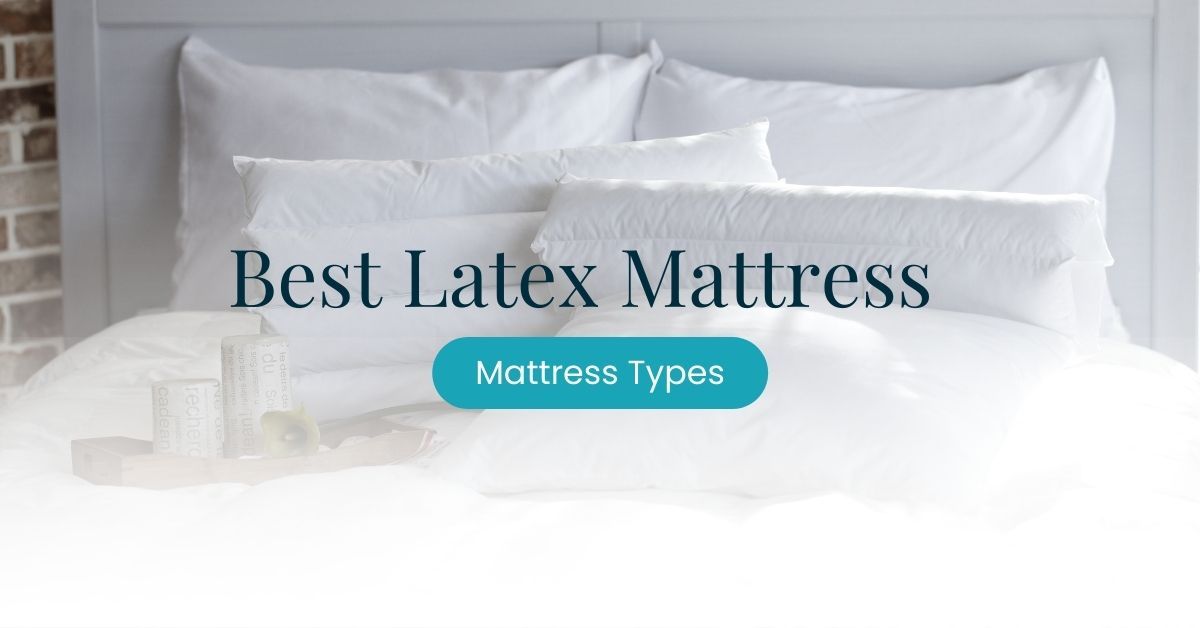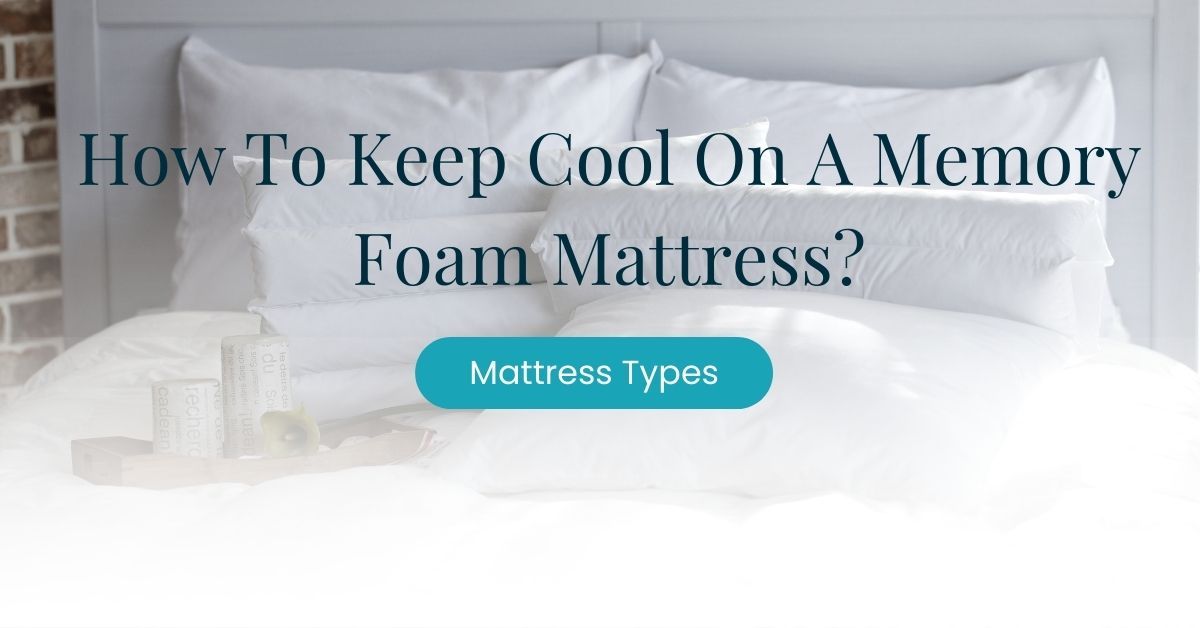A pillow top mattress differs from other mattress types by having an additional layer of padding glued or stitched to the top surface. It’s usually made of materials such as memory foam, foam, or fibrefill. The purpose of the pillow top is to provide extra cushioning and support for you, enhancing comfort via increased support.
You deserve a good night’s sleep and to wake up feeling rested and refreshed. But with so many mattress options available, how do you know if a pillow-top is for you?
A pillow top’s extra layer of padding and enhanced support is not all it has. Let’s explore the benefits and drawbacks of a pillow top mattress to see if it’s the right fit for you.
Pillow Top Mattress Construction
A pillow top mattress is your secret weapon for a great night’s sleep. The top surface, or pillow top, hides a layer of super comfortable and supportive material. This layer is what sets it apart from other mattresses.
But a pillow top isn’t just about the top layer. It’s a combination of different materials, all working together to create the perfect sleeping experience. Beneath the comfort layer, you’ll find a middle layer made of sturdy innerspring or pocket spring coils. These coils provide the support your body needs to feel weightless and free from pressure.
And at the very bottom, you’ll find a durable foam layer that keeps the whole mattress feeling sturdy and well-balanced. In fact, some pillow tops even have double comfort layers, so you can flip your mattress every now and then to prevent sagging.
4 Cushty Benefits Of Pillow Tops Mattresses
You may wonder how beneficial a pillow top mattress is and why you should have one. To answer your question, here are the benefits of using a pillow top mattress:
1. Added Comfort
The main benefit of a pillow top is the extra cushioning and padding on the sleep surface add more comfort and support to a user during sleep.
The coil systems inside also add comfort by supporting the sleeper’s weight—like a traditional innerspring.
By combining pressure support and weight support, pillow tops are an improved mattress experience. They can be compared to some non-pillow top hybrid systems.
2. Improved Airflow
Pillow top mattresses are designed to promote airflow and increased ventilation so if you’re a hot sleeper then it’s suited for you.
You sleep cooler because a pillow top’s internal structure is made with open coil systems, and air can seep through and cool down the mattress surface and the user’s body temperature.
However, don’t expect excellent airflow for foam-based pillow top mattresses, as foam blocks sufficient airflow and traps heat.
3. Affordability
They are affordable without sacrificing great comfort and support. Compared side-by-side with luxury memory foam, latex, and hybrid mattresses, pillow tops are cheaper.
Some models can be expensive, such as variants using pocket springs. And some can be cheaper, usually innerspring mattresses.
But generally, pillow tops use innerspring systems such as Bonnell, continuous, and offset coils, bringing down prices.
4. Lower Off-Gassing
Have you unboxed a new foam mattress before? If you have, then the recognisable factory-like smell shouldn’t be as potent with pillow tops.
Unlike foam mattresses that off-gas, some pillow tops have reduced foam components, and some models don’t even have foam-based materials.
Pillow tops with no foam components have a limited chemical smell — a good thing for people with sensitive noses and for people who are looking to sleep on their new mattress right away.
3 Drawbacks of Pillow Top Mattresses
Aside from the benefits, pillow tops also have drawbacks which we cover below:
1. Sagging Issues
Unfortunately, pillow tops are notoriously famous for their sagging issue. This sagging issue is caused by two reasons or a combination of both: top-layer compression and coil compression.
First, the topmost layer gets compressed due to continuous pressure from constant usage. Fibrefill, cotton, and down and feather materials can also be compressed over time and lose their plushness—leading to sagging. As a pillow-top is usually one-sided and you don’t flip the mattress, you have to replace the entire mattress even quicker than other mattress types.
Second, the coils inside the mattress get compressed for the same reason—constant pressure. These coils lose their elasticity and springiness, leading to sagging, usually situated in the centre of the bed.
2. Less Durability
Pillow tops are known to be one of the least durable type of mattress in the bedding industry and are known to only last an average of 3-7 years at most.
This low durability may be attributed to the build quality of the top layer and the coil quality of the support layer.
The topmost layer of a typical pillow top is thin. It is usually made from foam, latex, cotton, fibrefill, and down. These materials get compressed over time, a natural wear and tear phenomenon.
Innerspring coils are not durable, too, as most traditional innerspring mattresses only last for seven or more years, depending on usage.
3. Motion Transfer
The innerspring systems pillow tops are notorious for being motion sensitive with high motion transfer. This means that whenever a partner moves during sleep, you feel every movement like you’re the one who moved.
A high motion transfer also means that if you moved towards the centre of the bed, your partner would move too as the centre sinks away, causing you both to roll together.
Are Pillow Top Mattresses Good?
Imagine after a hard day of work, you’re greeted with a soft and supportive cushioning acting like a cloud supporting your body. You close your eyes and take a deep breath, with the stresses of the day becoming a distant memory. If your current mattress doesn’t give you this feeling, then you’re missing out on the magic of a pillow top.
But, they are less durable and prone to sagging within a few years, only making them an excellent short-term investment. However, if you want a durable mattress that can last you for more than a decade, a pillow top shouldn’t be one of your choices.
You can also consider its features and how it connects with your needs and preferences:
- If you sleep hot, a pillow top can work for you
- If you want a comfy mattress that’s not as expensive as latex and hybrids, a pillow top is good
- If your nose is sensitive to strong scents, a non-foam pillow top can be good
For us, a pillow top can be an excellent short-term sleep investment. Unfortunately, its durability and sagging make it a dubious long-term sleep investment.
What’s The Difference Between Euro Top and Pillow Top?
Euro top and pillow top mattresses are often confused for two entirely different mattress types. There’s a few key differences:
Pillow top mattresses are:
- Softer and plusher than euro tops
- Sewn or glued on the topmost layer of the mattress
- Seen as having its topmost layer protruding along the edges
Euro top mattresses, on the other hand, are:
- Denser and firmer than pillow tops
- Usually more durable than pillow tops
- Sewn beneath the topmost layer, making the surface look flat
Can Pillow Top Mattresses Be Flipped?
Yes and no. If the pillow top you bought is marketed as double-sided, the mattress may be flipped as both sides have pillow-like padding.
However, if your pillow top doesn’t have a tag that says it’s double-sided, you shouldn’t flip it. There’s a couple of reasons for this, the pillow top topper will be compressed against the bed foundation and the non-pillow top side won’t be too comfortable.
Instead rotate it 180 degrees so the head side becomes the side by your feet.
How Long Do Pillow Top Mattresses Last?
Pillow tops last an average of 3-7 years, which is a really short lifespan compared to other mattress types.
Memory foam mattresses last an average of 8-10 years; innerspring mattresses last for seven years or more, while latex, especially a natural variation, lasts between 15-25 years.
The top of the mattress and one-sided nature subjects it to more wear-and-tear, but for a more detailed answer visit how long do pillow top mattresses last?
Pillow Top Mattresses and Sleeping Positions
Pillow tops are something we can call a “mild hybrid” since they use two different mattress systems. With this in mind, the versatility of a pillow top is something we can vouch for concerning sleeping positions.
Back Sleepers
For back sleepers, the softness of the top layer and the responsiveness of the coils give your back a very supportive feel. This makes it great for people feeling back pain too.
Side Sleepers
As for side sleepers, the combined mild contouring and ample support for your pressure points make pillow tops a good mattress.
Stomach Sleepers
As for stomach sleepers, they can be good but this largely depends on an individual’s comfort level perception and other sleeping preferences.
A person’s weight is also a comfort factor when it comes to sleeping positions but fret not since pillow tops can easily accommodate people weighing beyond 80kg. However, don’t expect pillow tops to compete with full hybrids, as they rule the roost when it comes to handling larger weights.
How Firm Are Pillow Top Mattresses?
Pillow top mattresses are normally medium-firm to firm in terms of support, however the firmness will depend on the specific mattress, the materials used, your sleeping position and weight.
Now you may be thinking hold on a second, don’t they have that layer of soft, cushioned material on the top so how is it medium-firm? Well, this top layer is supported by firmer layers underneath which helps ensure you don’t sink too far in.
Of course, it differs from mattress to mattress, so make sure to read mattress reviews of the specific model you’re looking at. Or, better yet, go down to the store and give it a try and talk to the salesman.
If you prefer a firmer mattresses, consider a traditional innerspring or a memory foam mattress with a high density of foam.
How Deep Are Pillow Tops?
Pillow top mattresses often have a depth that falls within the range of 8 to 20 inches. They are normally deeper than traditional innerspring mattresses due to the added layer of cushioning at the top.
What Size Bed Sheets Do You Need For Pillow Tops?
It really depends on the mattress model, but if you’re looking at a deeper 20 inch mattress then make sure to buy bed sheets which can accommodate this depth. These are usually called ‘deep fitted sheets’ so ask in-store or have a look online.
Pillow Top vs Memory Foam – Which Wins?
There are loads of considerations when buying a mattress, but lets see how they weigh up when we pit pillow tops vs memory foam against each other:
- Weight of sleeper: Memory foam may be more supportive for heavier sleepers. It’s ability to contour to the body and distribute weight more evenly helps it win against pillow tops.
- Position of sleeper: Pillow tops are more suitable for back and stomach sleepers as it’s more responsive to your body weight, keeping you on the mattress surface. Whereas, memory foam allows you to sink and contours your body to reduce pressure points.
- Costs: Memory foam mattresses are, on average, more expensive than pillow tops.
- Longevity: Memory foam wins here as they can be flipped to reduce sagging and do not have the same wear and tear as spring mattresses with pillow top layers.
- Motion isolation: Clear win here for memory foam. This means if you have a partner you sleep with then pillow tops may not be for you – especially if you go to sleep and wake at different times.






